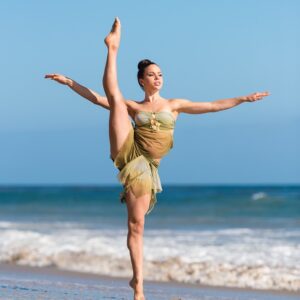
The Planes And Axis In Kinesiology is a field that seeks to understand the physics of motion and the forces involved in human activity. This field encompasses a range of scientific disciplines, including anatomy, physiology, physics, and biomechanics, and is relevant to various applications, such as physical therapy, sports science, and rehabilitation. It includes studying the musculoskeletal system, joint movements, planes and axes of action, and the biomechanical principles that govern human motion.
In studying the The Mechanics Of Human Movement , researchers and practitioners aim to develop a deeper understanding of the biomechanical principles that govern human motion and to use this knowledge to develop effective treatment and training programs. This includes understanding the planes and axes of movement, joint movements, and the forces involved in different types of activity, such as walking, running, jumping, and throwing.
The Planes And Axis In Kinesiology are: sagittal, frontal, and transverse, each involving different activities and axes of rotation. Understanding The Mechanics Of Human Movement is essential in fields such as physical therapy, sports science, and biomechanics as it helps to analyze and classify movement patterns and develop effective treatment and training programs to improve human performance and prevent injuries.
Read More: Read more about different movements of pelvis in different planes.
Table of Contents
The Mechanics Of Human Movement-The Planes And Axis In Kinesiology
The Planes And Axis In Kinesiology refers to the study of the physical principles and laws that govern the motion of objects, including living organisms such as humans and animals. This includes the analysis of forces, mass, acceleration, momentum, energy, and other related concepts.
The Mechanics Of Human Movement can be divided into two main branches: classical mechanics and quantum mechanics. Classical mechanics deals with the motion of objects much more significantly than atoms and molecules. In contrast, quantum mechanics deals with the behaviour of particles at the atomic and subatomic levels.
In human movement, the mechanics of action is the study of how forces and torques acting on the body to move. This includes the analysis of joint angles, muscle forces, and the dynamics of the body’s segments during different movements such as walking, running, jumping, and throwing.

The Mechanics Of Human Movement is an important area of study in biomechanics, sports science, physical therapy, and rehabilitation. By understanding the principles that govern movement, researchers and practitioners can develop more effective interventions for improving movement quality, preventing injury, and enhancing athletic performance.
Planes Of Movement
Planes of movement refer to the three-dimensional planes through which the body can move. The three planes of motion are:
- Sagittal Plane: This vertical plane halves the human body into two halves ( left and right ). Motions in the sagittal plane happens along the frontal axis, including forward and backward activities such as walking, running and lunging.
- Frontal Plane: This vertical plane halves the human body into two halves ( front and back ). Motions in the frontal plane happens along the medial-lateral axis and include side-to-side movements such as lateral raises, jumping jacks, and side shuffling.
- Transverse Plane: This horizontal plane halves the human body into two halves ( top and bottom ). Motions in the transverse plane happens along the longitudinal axis, including rotational movements such as twisting, throwing, and swinging.
Most movements occur in a combination of these three planes, a multi-planar movement. Understanding planes of motion is vital in anatomy, physiology, biomechanics, and physical therapy. It helps to analyze and classify The Mechanics Of Human Movement patterns and develop effective exercise programs.
Axis Of Movement
The axis of movement refers to the imaginary line or point around which a body or body segment rotates or moves. The three axes of motion correspond to the three planes of movement and are perpendicular.
The three axes of movement are:
- Medial-Lateral Axis: This imaginary line runs horizontally from side to side and is perpendicular to the sagittal plane. Movements around this axis occur in the frontal plane, such as side-to-side movements, like lateral raises or side shuffling.
- Anterior-Posterior Axis: This imaginary line runs horizontally from front to back and is perpendicular to the frontal plane. Movements around this axis occur in the sagittal plane, such as forward and backward activities like walking, running, and lunging.
- Longitudinal Axis: This imaginary line runs vertically from top to bottom and is perpendicular to the transverse plane. Movements around this axis occur in the transverse plane, such as rotational movements like twisting, throwing, and swinging.
Understanding the axis of movement is essential in biomechanics, physical therapy, and sports science, as it helps to analyze and classify The Mechanics Of Human Movement patterns and develop effective exercise programs.
Which Movements Occur In Sagittal Plane
Movements in the sagittal plane occur along the anterior-posterior axis and include forward and backward directions. Some common examples of activities in the sagittal plane include:
- Flexion: Bending/folding of a joint to reduce its angle, e.g bending the elbow or knee.
- Extension: Straightening/unfolding of a joint to exceed its angle, e.g straightening the elbow or knee.
- Plantarflexion: Pointing the toes downward, such as during a calf raise or pushing off during walking or running.
- Dorsiflexion: Pulling the toes upward, such as lifting the foot off the ground or during a squat.
- Forward bending: Bending the trunk forward, such as during a sit-up or toe touch.
- Backwards bending: Bending the trunk backwards, such as during a backbend or a standing back extension.
- Gait: Walking and running involve movements in the sagittal plane, with the legs swinging forward and backwards at the hip joint.
Understanding the movements in the sagittal plane is vital in fields such as anatomy, kinesiology, and physical therapy, as it helps to analyze and classify The Mechanics Of Human Movement patterns and develop effective exercise programs.
Which Movements Occur In Frontal Plane
Movements in the frontal plane occur along the medial-lateral axis and include side-to-side movements. Some common examples of activities in the frontal plane include:
- Abduction: Starting from mid of body, move the extremity outward/away from it, e.g lifting the arm to the side or doing a lateral leg lift.
- Adduction: From abduction, move your extremity towards/inwards of your body, e.g moving the arm towards/close to midline of body side or bringing the legs together.
- Lateral flexion: Bending the trunk to the side, such as during a side bend or a lateral flexion stretch.
- Elevation: Raising the shoulder girdle, such as during a shrug or lifting the shoulders toward the ears.
- Depression: Lowering the shoulder girdle, such as during a shoulder press or pulling the shoulders down and back.
- Inversion: Turning the sole inward, such as during a balance exercise or standing on the outside edge of the foot.
- Eversion: Turning the solitary outward, such as when standing on the inside edge of the foot.
Understanding the movements in the frontal plane is essential in fields such as anatomy, kinesiology, and physical therapy, as it helps to analyze and classify The Mechanics Of Human Movement patterns and develop effective exercise programs.
Which Movements Occur In Transverse Plane
Movements in the transverse plane occur along the vertical axis and involve rotational movements. Some common examples of actions in the transverse plane include:
- Internal rotation: Rotating a limb or body part inward toward the midline, such as rotating the arm inward or turning the foot inward.
- External rotation: Rotating a limb or body part outward from the midline, such as rotating the arm or turning the foot outward.
- Horizontal abduction: Moving a limb horizontally away from the body, such as during a chest or reverse fly.
- Horizontal adduction: Moving a limb horizontally toward the body, such as during a cable crossover or a chest press.
- Pronation: Rotating the forearm inward, so the palm faces downward, such as during a push-up or a plank.
- Supination: Rotating the forearm outward, so the palm faces upward, such as during a bicep curl or a chin-up.
- Spinal rotation: Rotating the trunk to one side or the other, such as during a seated twist or a standing trunk rotation.
Understanding the movements in the transverse plane is essential in fields such as anatomy, kinesiology, and physical therapy, as it helps to analyze and classify The Mechanics Of Human Movement patterns and develop effective exercise programs.
Summary

The Planes And Axis In Kinesiology is a complex and multifaceted field that involves the study of the physical principles that govern human motion. It encompasses various topics, including the musculoskeletal system, joint movements, planes and axes of action, and the biomechanical principles that underlie human activity. Advances in technology, such as motion capture systems and computer simulations, have greatly enhanced our ability to study human movement and its biomechanics.
Human movement is essential for all aspects of daily life, from basic activities such as walking and reaching to more complex movements such as running, jumping, and throwing. Understanding the mechanics of human action is essential in fields such as physical therapy, sports science, biomechanics, and ergonomics. It helps to analyze and classify movement patterns, identify factors that contribute to injury, and develop effective treatment and treatment training programs to improve human performance and prevent injuries.
Overall, The Mechanics Of Human Movement plays a critical role in improving human performance and preventing injuries in a wide range of settings, from rehabilitation and physical therapy to sports science and exercise physiology.

6 Responses